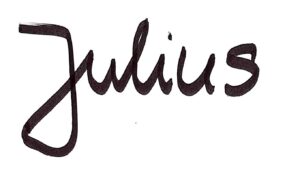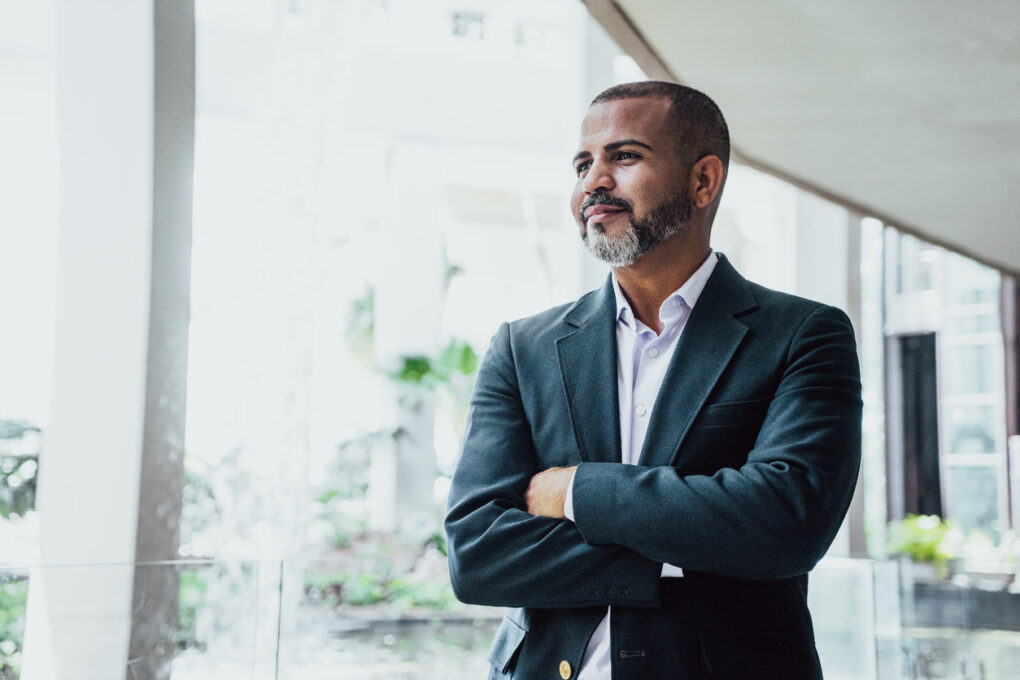I write about embodied leadership & transformation in my blog – but how exactly does this work in practice? In this case study, I therefore write about embodied leadership in coaching. The case study is also part of an article on embodied leadership that appeared in Harvard Business Manager in September 2024.
What was the coaching about?
My client was part of the management board of a company that found itself in a difficult economic situation that demanded tough decisions. A requirement that clashed with his participative management style. For him, one thing was certain: the new direction could not be allowed to affect the employee-orientated culture and the high level of loyalty of his employees in any way. However, he also realised that he was jeopardising the future of his employer – a medium-sized e-commerce company – by hesitating. The pressure was so great that he even showed physical reactions in the meantime, yet he did not take action. Embodied leadership is helpful here when reason and gut feeling contradict each other. And just like in sport, embodied leadership can also be trained using four competences, the 4 A’s: Awareness, Attraction, Action and Alignment. To achieve this, I work with both the mind and the body. I do the latter using so-called body hacks, which you can find out more about at the end of the article.
Competence 1: Awareness
The tension between external demands (quick business decisions) and inner convictions (such as the desire to take people with me) initially manifested itself in physical stress symptoms in my client. He reported inner restlessness and thoughts going round in circles. I therefore initially worked with him using a body hack called Quick Stress Release. This exercise helped my client to return to a relaxed state of mind. This made it possible for him to become aware of his tensions again without falling into a state of rigidity. He learnt to accept opposing polarities and to cope better with the tension between economic requirements and personal values. At the same time, he developed a deeper understanding of his stress patterns. He realised that his desire not to hurt people prevented many productive conflicts. This regularly led to sub-optimal results for the company and dissatisfaction among employees, who felt that their development opportunities were restricted.
Competence 2: Attraction
The next step was to develop a leadership purpose in order to make my client capable of acting again. Attraction in embodied leadership entails aligning your current leadership behaviour with your ideal leadership personality. I used a collection of images to help him work out which values drive him as a leader and how he can harmonise them with external requirements. He decided on two motifs, one representing his decisiveness and the other his team orientation. The selection process itself was very revealing. During the interview, it became clear that my client felt very connected to his team and was afraid of change. He was well aware of this rationally, but his loyalty was still blocking him. In order to break through this blockade, I performed the “Activating Push” body hack to encourage his decision-making ability and his power of realisation. While my client was still performing the bodyhack, his facial expression changed and he felt his determination to make the change.
Competence 3: Action
Through our discussions and exercises, my client realised that his autopilot (“I mustn’t make myself unpopular with people”) came into play particularly in stressful situations and kept sabotaging him. I worked with my client using the ACT method to help him live his decision consistently in everyday life: A stands for “Awareness” (= becoming aware of inner tension), C for “Call-to-mind” ” (= becoming aware of one’s intention and leadership purpose) and T for “Transform” (= connecting with one’s own body in such a way that one comes back into action and lets go of rigidity). By repeatedly practicing the method, my client was finally able to detach himself from his autopilot and make conscious decisions in line with his leadership purpose, even under stress.
Competence 4: Alignment
After around six months of intensive work in regular coaching sessions, I conducted an alignment session with my client to reflect on what he had achieved so far. Although the overall situation in the company was still tense, he reported significantly more clarity and a resulting reduction in stress. In the session, in addition to reflecting on the rational level, we placed particular emphasis on the emotional retracing of the changes. The fact that my client was able to develop access to his emotions enabled him to identify his inner contentment and calmness as a valuable resource for future challenges.
You can find even more information on embodied leadership and specifically on bodyhacks in the links below.
With body & mind,

Harvard Business Manager:
What is “Embodied Leadership”?
https://lassalle.berlin/2024/01/19/embodied-leadership-1-2-what-is-embodied-leadership/
https://lassalle.berlin/2024/03/20/embodied-leadership-2-2-how-to-develop-embodied-leadership/
Video series “Bodyhacks”:
Introduction: https://lassalle.berlin/2023/07/11/bodyhacks-introduction/
Bodyhack #1: https://lassalle.berlin/2023/07/11/bodyhack-1-quick-stress-release/
Bodyhack #2: https://lassalle.berlin/2023/08/22/bodyhack-2-tension-release/
Bodyhack #3: https://lassalle.berlin/2023/09/15/bodyhack-3-flowing-from-the-heart/
Bodyhack #4: https://lassalle.berlin/2023/11/13/bodyhack-4-embrace/
Bodyhack #5: https://lassalle.berlin/2023/11/30/bodyhack-5-energizing/
Bodyhack #6: https://lassalle.berlin/2024/01/04/bodyhack-6-yes-and-no-pose/
